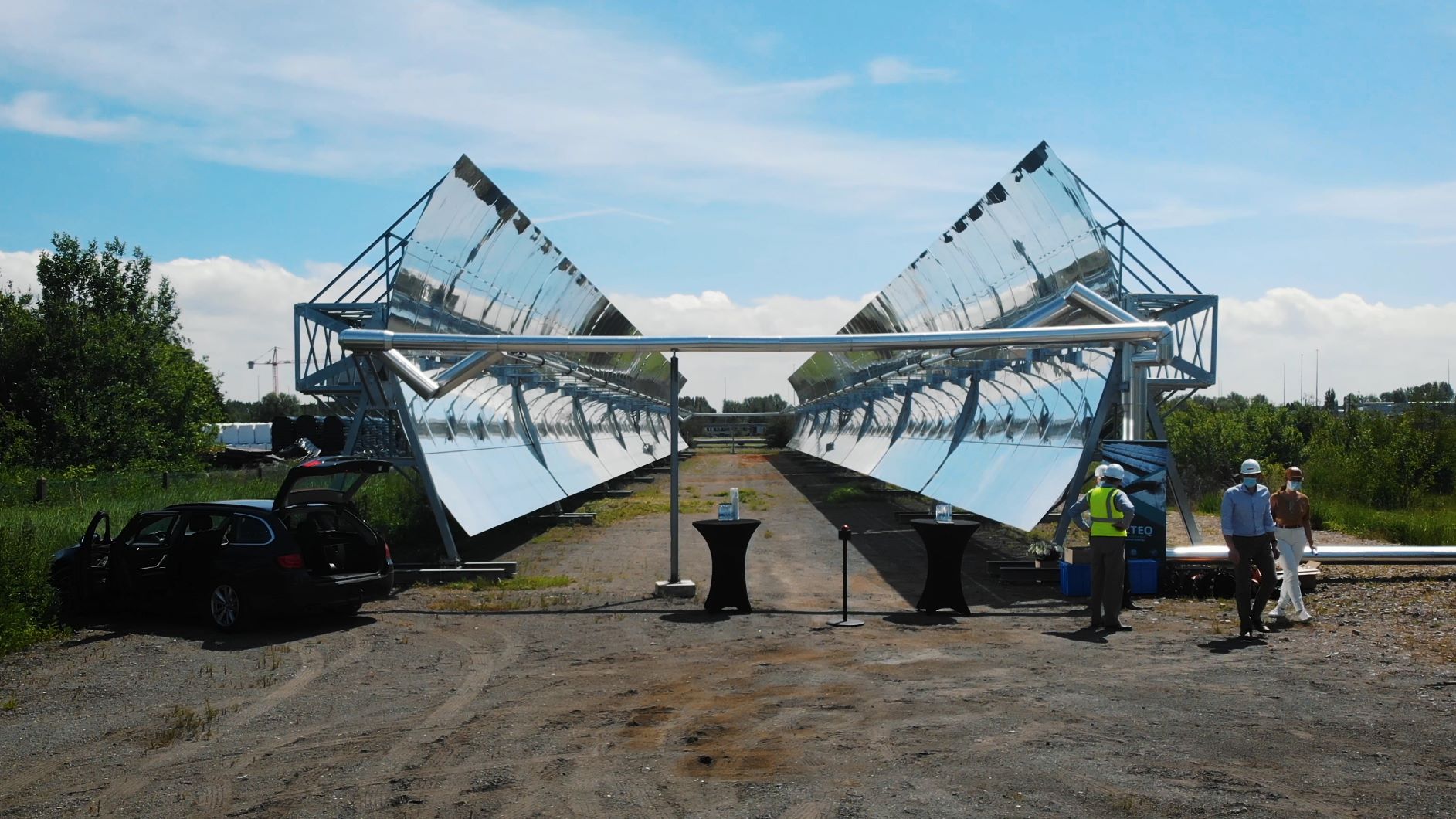
SUSTAINABLE
solar thermal park
At the Proviron production facility in Ostend, a solar thermal plant is being used to convert sunlight into heat for the reactors. The system of parabolic mirrors focuses the sunlight onto a central circuit filled with ‘thermal oil’ that can reach a temperature of up to 400 0 C. The heat generated is converted to steam via a heat exchanger and used as an energy source for the reactors in the production facilities.
On 11 June 2021, the plant was officially inaugurated by Mayor Bart Tommelein and the Ostend City Council. The installation was built by Azteq, a Flemish company specializing in renewable energy solutions for businesses.
Green energy as part of Proviron’s vision of the future
Sustainable production, with respect for people and the environment, is embedded in Proviron’s DNA. The implementation of these solar mirrors is therefore a conscious choice to focus more on green energy.
“On sunny days, these solar mirrors produce up to 20% of the heat required by the nearby installations” says Wim Michiels, CEO of Proviron, “this is a real and direct reduction of CO2 emissions”.
With this project, Proviron is contributing to a responsible industry. And this fits into Proviron’s ambition to make solutions for the challenges of the future.
A solar mirror is not a solar panel.
In a solar thermal park, sunlight is concentrated via parabolic mirrors, releasing high-quality heat with temperatures much higher than, for example, a solar water heater.
Parabolic mirrors with a height of 6 m each are used, which are arranged in lines of 120 m. Each parabola has a focal point. By placing these focal points in a line, a temperature of up to 400 °C is achieved. This heat is converted into steam as a heat source in chemical plants. Today gas or oil is burned, but the solar heat is thus completely green.
A solar park produces four times more energy per installed square meter than a traditional solar panel installation. It is therefore a completely green alternative for industrial heat requirements and can therefore make a significant contribution to reducing CO2 emissions.
